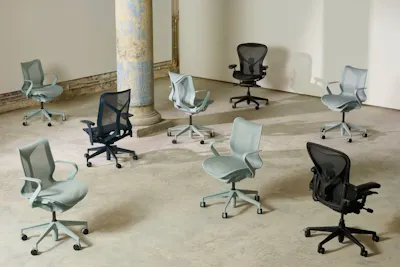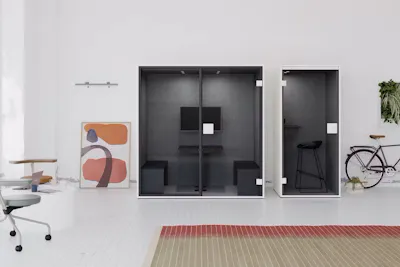Audiophile Niclas Ekwall on vocal drum solos, the importance of play and the resonating body

Swedish designer and artist Niclas Ekwall recently exhibited his project “The Resonance of Play“ as a part of the Graduation Show during Dutch Design Week, and this coming summer he will be showing his work during the design week in Milan. We had a talk with Niclas about his approach to design and his relationship to sound and music.
# Tell us a bit about yourself and what led you to this field of practice!
When asked to present myself the first day at the Masters, I actually told them that I am a drummer who studies design. But I see myself as a hyper-sensitive technical nerd who lives for music. I was born 1982 in Stockholm, in an upper-class area called Bromma. I was very technical from an early age and loved to repair mopeds and cars. Later, I joined the navy to become an engine mechanic on a submarine and almost went down the engineer route. But my big love is music.
The sound of music struck me hard at the age of 10 when a friend of the family played Stairway to Heaven by Led Zeppelin, and for many years all I could listen to was John Bonham’s heavy grooves. There was no other way for me than to start playing drums - it was a calling and all I could think of. Many years later, after a self-taught career in 3D visualization and being head of IT at a Stockholm-based architectural firm, I left to study something closer to my heart. I did two years in art school followed by a bachelor’s in Industrial Design in Lund, before doing a Master in Social Design at the Design Academy Eindhoven.

# And how was your time at the Academy?
The step away from industrial design was a way to open up to something bigger than the interactive attraction of giving form and commercial meaning to an object, but my time at the Academy was a tough ride. The last year of my Master was all about finding lost authenticity, with several research processes running simultaneously in parallel, all focusing on my intuition and self-reflection. I was digging deep within myself, and I guess some would call it self-design. The basis of it all was a sense of self-censorship, but curiosity led the way in materializing what was beyond layers of socially implied ideas and structures. One night I was lying in bed with all the lights out and with my eyes closed. I was wide awake, listening to the cars passing by when suddenly a sentence appeared to my inner eye. In bright white, it said “Measurements kill our sensitivity”. This became my mantra and guiding light and the lens through which I re-evaluated my relationships - I saw measurements everywhere. I started experimenting with what felt like the opposite of a rigid human-made structure, and that to me was water, pouring ink into water on big plexiglass boards. I also started to paint like a maniac, all day and all night. There were so many charcoal drawings in my room it was hard to walk from the bed to the kitchen. I told my body to paint whatever it wanted to paint. My eyes were not the master, more of a spectator, and the most unusual paintings and images unfold in front of me. Surpassing the fear of judgment showed me the next step, and I did a two-minute unprepared drum solo with my voice in front of a big audience. This was my first try at an improvised performance, and it felt amazing.

# Was this a way in to start including sound in your work?
Yes. I have a strong connection between visuals and sound, but a will to incorporate other people steered me towards sound and, maybe, more importantly, the act of listening. Revisiting the world of sound brought back fulfillment and deep meaning, not only in my project but also in me as an artist and designer. You can listen to yourself, the other, the room and to materials. But the most beautiful thing to me is when you are able to hear the in-between, that is music to me. Sound as a carrier of all in between, socially, spatially, politically, interpersonally - the list can go on forever. At one point, I tried getting people to practice freeform singing with me, but that was very hard. My general impression is that the shame of one’s singing voice is massive. But, if your vocal cords are hesitating and you are too scared, then maybe something else could vibrate.

# This is among the topics you visit in your graduation project if I am not mistaken?
Yes, this was the birth of what later became “The Resonance Of Play”, a project about how playfulness resonates in social interactions and how it reveals this delicate balance through sound. Fear can’t enter this state of play, that is, to enter the state of play, you have to dare to leave fear behind and embrace curiosity, and curiosity demands listening, consciously or unconsciously. I used curiosity as a guide when designing an emerging room filled with big instruments. There were instruments in different shapes and sizes with resonating membranes in either open or closed structures, even stand-alone membranes like big metal sheets. They do not look like regular instruments, which might give you an idea of not being able to play because of a lack of skills. I reduced the visual cues of measurements with the aim to ease the spectator into play. These instruments could be played with your own smartphone to make you feel more at home and a custom-made web-based synthesizer. And with the almost painting-like movement of your fingers, it translated into a massive and potent sound from a resonating body.

# So you are aiming to bring the curiosity and playfulness back to music, one could say.
Yes, and it is also a sort of critique against the limitations of speakers, as seen as a measurement in the context of my work. Speakers were invented to channel and represent all audible frequencies and to give an illusion or image of what was recorded in the past, so to speak. This is what audiophiles, me being one, are chasing with no luck of ever getting to the real thing. You see, when something is recorded, you take something with infinite complexity in time and space, like a voice, and the microphone is translating air pressure waves into electrical pulses stored on any medium of choice. This reduces everything happening at the time of recording to a one-dimensional stream of information. The complexity is lost, I would say. If you treat the speaker as an instrument in itself, then you have a different attitude when mixing what comes out. But, nothing is static on this planet, and everything changes; one day, you like a song, and the next, you can’t stand it. So listening is all you can do - that is listening and not hearing, real-time should always be your attitude. My work is an exploration of how to bring back that complexity of a resonating body, like an analog instrument, where the physical aspects are limited but which also carry a complexity within itself.
— My work is an exploration of how to bring back that complexity of a resonating body, like an analog instrument, where the physical aspects are limited but which also carry a complexity within itself.












